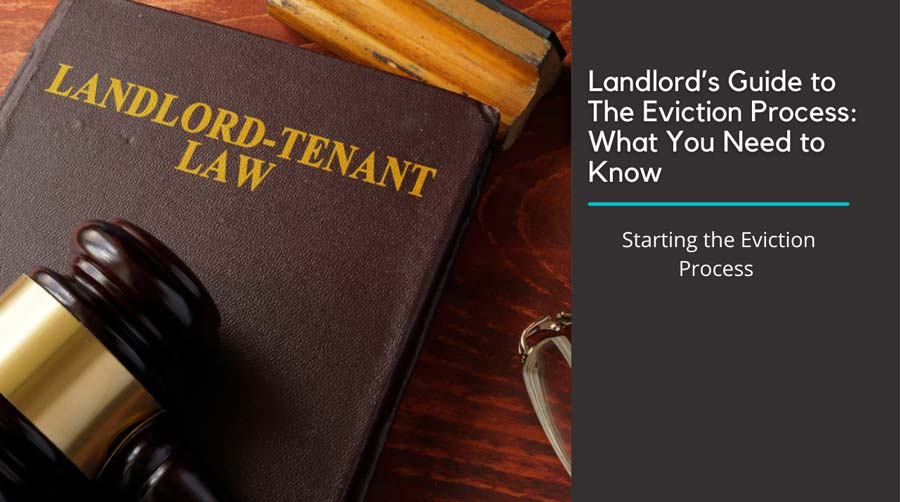
Landlord’s Guide to The Eviction Process: What You Need to Know
Your renter didn’t pay this month, or maybe it has been a couple of months, what do you do now!? No need to panic, with this detailed guideline you’ll be prepared to navigate the eviction process and plan for the attorney fees incurred in an unlawful detainer case. Over the last 40 years, Management One has filed over 2,000 evictions. Not much surprises us anymore during an eviction. I hope you find this information useful and eases any anxiety you might be having.
Starting the Eviction Process: Did you post the notice?
After the rent is due and the grace period has expired, the eviction process starts. You will need to post a 3-day notice to pay or quit the premises. This notice is the basis for your eviction process. To file the case, make sure all information is accurate to avoid delays in your eviction process...
Avoid residents filing an Arrieta claim, make sure to file for all unknown occupants to avoid further delays in the eviction process. Click here to ensure you are filling out the 3-Day Notice correctly.
Waiting Period
After the 3-day notice is given to the resident, there is a waiting period. Actually, there is quite a bit of waiting around in the eviction process. Be prepared financially for an eviction process of at least 45 days after the initial notice was served, that is for an uncontested unlawful detainer (more details to come).
As mentioned in the article dedicated exclusively to eviction notices, there are different ways to serve someone with the 3-day pay or quit notice and each of them has a different waiting period.
Here are some examples:
- Personal Service: 3 days
- Posting on the door: 10 days
After the waiting period has expired you…
File unlawful detainer with the court
You might choose to retain an attorney to help you get all the right paperwork filed, any mistake can translate into extra time without the income of your rental. An attorney’s start rate for an unlawful detainer lawsuit is about $700-$800 in the Inland Empire.
If you decide to do it yourself, you will need the following documents to file an unlawful detainer case:
- Copy of the lease agreement
- Copy of the 3-day notice that served to the tenant
- Proof of service signed by the person that served the resident with the notice to pay or quit.
- Completed UD100 form

I filed, now what?
You will need to serve your tenant with the eviction paperwork. In California, you are not allowed to personally serve them.
Therefore, you might elect to hire someone to do it for you. This person will need to sign a proof of service form which will need to be filed with the court. Professional process servers cost anywhere from $50 to $100.
There is usually a 1-2-week period where your process server will try to serve the tenant with the unlawful detainer paperwork. If the tenant evades service then a request for a postal order will need to be requested from the judge.
Posting order
This is requested when a tenant evades service for up to 2 weeks. To keep the case going you must request the judge to approve for you to serve them via postal mail. Once the request is filed with the court it will take a couple of days to get back the signed approval from the judge.
Second Waiting period
Once your tenant has been served with the unlawful detainer paperwork either personally or by mail, he or she has 5 days to file an answer with the court.
Caveat: They might file for a demurrer in this time period.
According to Wikipedia “A demurrer is a pleading in a lawsuit that objects to or challenges a pleading filed by an opposing party. The word demur means “to object”; a demurrer is a document that makes the objection”
(California Code, Code of Civil Procedure – CCP § 430.10)
Once the demurrer is filed, a court date will be scheduled in which where the judge will decide if the unlawful detainer lawsuit needs to be thrown out or not.
If the demurrer is denied to the tenant you go back to the answering period and the tenant has another 5 days to file an answer to the unlawful detainer case with the court.

Crossroads:
Court proceedings or Sheriff Lockout
Whether the resident filed an answer with the court or not will have an impact on how long your case takes to complete.
Contested: filed answer with the court
If the tenant filed a response with the court, a trial date will be scheduled, usually within 15 days (with the Riverside, CA courts).
Uncontested: DID NOT file an answer with the court
If the tenant DID NOT file a response with the court, a writ of possession package will need to be filed with the court. Once the judge signs the approval, the file is sent to the Sheriff’s office and they schedule a date and time to escort the tenant out of the property.
The Sheriff’s office posts a 5-day notice to vacate the property and provides you with a lockout date. Make sure to take a locksmith to the lockout date so that locks are changed and your tenant can’t access the home again in the future. The case up until this point usually takes about 45 days (with the Riverside, CA courts).
Make sure to check on the tenants’ response which was filed with the court so that you are prepared for your court date.
Organize your paperwork and make sure to bring all pertinent data.

Trial checklist
Bring copies of all these documents:
- Any written notes, emails, or letters that detail any conversations or agreements between you and your tenant
- Written rental/lease agreement
- Any written modifications made to the rental/lease agreement
- A 3-day notice to pay or quit
- Tenant’s payment record
- Invoices for work that has been completed in the home and for which the resident may be making claims in their answer with the court.
- Print any pictures or documentation that may be relevant to the case.

Court appearance
Upon arrival to court, you will need to identify your court case on the sheet posted at the entrance. Then, check-in with the court clerk. If you have an attorney, he/she will do that for you. Take a seat and wait for your case to be called.
The going rate for an attorney appearing in court for you is between $150-$200.
Bankruptcy
Bankruptcy is often used as a legal tactic to delay the eviction process. Tenants who know how to work the system often file bankruptcy as a stall tactic in these proceedings.
In this case, you will need to file a motion in bankruptcy court to get the eviction “vacated” or removed from the bankruptcy filing. A court date will be set for this and might take about 15-25 days.
There is a hefty cost to file this motion, it runs about $600-$800.
Once you get the eviction case removed from the bankruptcy you can return to the eviction process.
More waiting…
Once the eviction process resumes and you are given a new court date you may resume with finalizing the eviction process.
Final court date (if Arrieta claim avoided)
Make sure to bring all of the previously mentioned paperwork in the eviction trial checklist.
You may choose to reach an agreement with the tenant before going in front of the judge. If you make an arrangement and present it to the clerk it will be given to the judge. Not only might you get to go home sooner, but it might help if you have reservations about how strong your case is.
Judges usually go in order of complexity leaving the cases that must be heard for the end. Therefore, if you are able to reach an agreement and get it in front of the judge you might be leaving earlier.
If you are not able to reach a settlement with the tenant before your case is called, you will present your case to the judge.
In your presentation, be sure to be concise and to the point. Use the KISS method:
- Keep
- It
- Short and
- Sweet
The judge will review the claims you stated on the unlawful detainer (UD-100) form you filed with the court.
The judge will ask if you have anything to add and verify the information with you. Then, the tenant will have an opportunity to explain their part of the story and why they have a right to remain on the premises. Based on the information provided the judge will make a ruling.
If the judge rules in your favor he will give a deadline for the lockout to occur, usually they grant lockout in about 15 days from the court date. (Riverside courts) The judge will issue the writ of possession and it gets sent to the Sheriff’s office to schedule the lockout date.
Final Thoughts
After it is all said and done; you will be buried in paperwork, court appearances, and motions; months would have gone by. Therefore, it is important to pay attention to detail and make sure to strictly follow the legal guidelines to avoid unnecessarily added time to the eviction process.
As it is, an unlawful detainer case can take anywhere from 45 days for an uncontested case to 4-6 months for a contested case.
Like I mentioned before, it all depends on what legal motions are used by you and the tenant in the eviction process.
Sound too complicated, and you have a full-time job and a family? Let Management One handle it! It is worth your time and peace of mind knowing that it will be handled correctly and no further time will be added to the eviction process.
Download our exclusive Eviction Map. This map will guide you through the process of an eviction.
Don't lose another wink of sleep!
Let the professionals handle your rental property.











